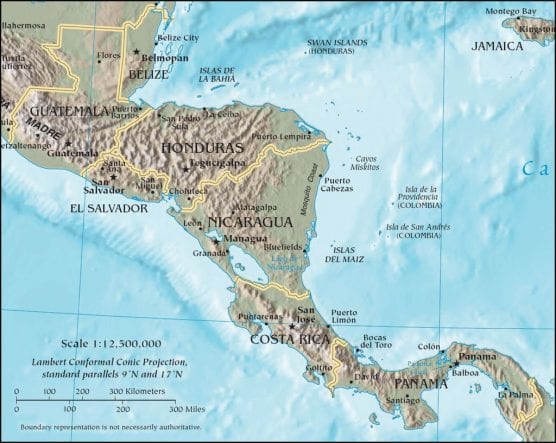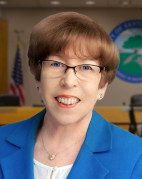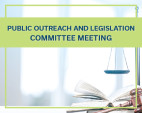Carl Boyer loved to take off on big adventures with travel partner Robert H. “Bob” Geiman, who says one of their biggest was to Panama, a 6,600-mile drive in 2005 from Central Texas to Central America, bumping down (almost) to the end of the Pan American Highway in a light-duty Ford Ranger pickup.
Boyer, the longtime teacher, Santa Clarita founding father, genealogist, historian, author and philanthropist who died May 29 at age 81, traveled to 161 countries in his lifetime.
Geiman, a former VP/administration for The Master’s College (now University) and a friend since the 1990s, was Boyer’s companion on 11 trips to 95 countries just between 2003 and early 2019.
Boyer planned each adventure meticulously, gathered up artifacts along the way (including wrappers of his favorite exotic junk foods), occasionally took photos, tossed them all in “trip boxes,” and later created elaborate photo albums for most of the trips.
Related: The Further Adventures of Carl Boyer, Part 1
He also wrote extensive, exhaustive recaps of more than 80 adventures, sometimes 50-60 pages long, enough to extend this “Further Adventures…” series well toward infinity.
“I have kept journals on most of my trips overseas and realize that they may prove to be of interest many years later because of the descriptions of travel and the recording of expenses,” Boyer wrote in the foreword to this as-yet-unpublished collection of trip journals, which he assembled in 2007 and updated after subsequent journeys.
Boyer’s archives – which also include an unpublished autobiography – are now in the possession of his three daughters, Michèle Boyer, Denise Johnson and Danielle Vermillion, who made them available for this series of articles.
Related: The Further Adventures of Carl Boyer, Part 2: India
“In recent years I have done a little thinking about my travels, and their impact on my life,” he wrote in the autobiography’s epilog, also from 2007. “I have come to the conclusion that life is not long enough. We spend a lifetime learning about the world, and ourselves, and finally develop some good ideas which need to be put to work, only to wonder how long we have to do just that.”

Carl Boyer’s daughters Danielle Vermillion and Denise Johnson peruse just a few of the stacks of travel recaps Carl Boyer wrote after each of his adventures. | Photo: Stephen K. Peeples.
The Road to Panama
Bob Geiman’s first big adventure with Boyer was a medical mission in 2004 organized by the nonprofit group Healing the Children to Tena, Ecuador, one of Santa Clarita’s two sister cities.
“After the trip to Ecuador, Carl was working on his history of Santa Clarita in an office furnished by the city in the industrial park,” Geiman said in a recent interview. “I stopped by to thank him for the opportunity of traveling with him on that mission.
“He looked at me and said, ‘Bob, what’s next?'”
That would become a running question, asked each time Boyer and Geiman returned from an international trek.
“Carl usually asked me to decide,” Geiman said. “Carl would do the actual work in making the trip happen. He loved to work with travel guides and put together detailed itineraries with bus schedule times and everything. Our preference was to travel by bus or train.
“But that first time he asked me what was next, I said, ‘Let’s drive down through Central America to the end of the Pan-American Highway, where the Darien Gap begins.’ That’s a 100-mile-wide jungle before the highway begins again in the country of Colombia in South America. Our destination was Yaviza, the little town at the southern end of the Pan-American Highway.”
“I responded with, ‘If you need somebody to ride shotgun, let me know,'” as Boyer wrote in his “Road to Panama” journal, which runs 47 pages and 16,287 words.
“We had postponed the trip six months so I could stay home and help with baby Danna, for whom we cared long hours for five months until she was well and (Boyer’s wife) Chris could take her home to her family in Ecuador,” Boyer wrote. “That had been the best thing I ever did.”

Carl Boyer and Bob Geiman in India, October 2017. Courtesy Boyer Estate.
Geiman drove his two-wheel-drive Ford Ranger from his home in Lynden, Washington to Dallas to pick up Boyer, who flew to DFW from LAX for the meet-up.
With the Ranger’s odometer reading 50,858 miles, the duo left Dallas on August 23, headed due south, staying with Geiman friends in Austin overnight. The next morning they stocked up on supplies in Laredo and crossed the border there into Mexico.
“We crossed Bridge No. 1 into Mexico and got lost when the signs to the car permit place petered out,” Boyer wrote. “We drove for an hour, asking our way, before we found it. We should have followed the Lonely Planet guidebook directions instead of the signs.
“Once we found the place, the signs inside were confusing,” he wrote. “Finally, I asked in a plaintive tone, ‘Where do we go?’ The lady at the door pointed up the stairs and said, ‘Izquierda,’ to the left. I followed directions – and found the men’s room!”
Once properly permitted, relieved and re-oriented, Boyer thwarted a gas station operator’s attempt to rip him off.
“When we gassed up in Saltillo I was quick to see the pump was turned to zero and quick to complain when the Pemex crooks shorted my change,” he wrote. “They tried to convince me I should pay MXN$386 (386 pesos) for 38.6 liters of gas but I convinced them in Spanish I was not buying that. I got the correct change and they got no tip.”
Gassed up and gone from Saltillo, Boyer continued, “I was surprised at the number of restaurants along the road; we ate when we reached the village of San Tiburcio, where we had a light snack at a tiny general store, the Casa Garcia. ‘Submarinos’ turned out to be a variety of Twinkies, and Bob said sternly that was all he was going to allow me for the whole trip. [That was to become a standing joke on future trips.]”
“A running joke was my trying to help Carl eat healthily, but he picked up junk food sometimes just to prove that he could do it,” Geiman said.
It cost Geiman and Boyer 20 pesos to drive through the 2.3 kilometer-long Tunel Ogarrio, which was once a mine shaft.

Bob Geiman: “The first photo at the top left was our stopping along the road to visit with a shepherd, and we ended up giving him some water. Below that is a convenience store where Carl bought a pack of Twinkies. The tunnel was a 2.3K one-way tunnel, and we’re parked waiting for the oncoming traffic to clear so we could go through.” Carl Boyer “Road to Panama” photo album page courtesy Boyer Estate. | Photo: Stephen K. Peeples.
Once through the south end of the tunnel, Boyer wrote, “We found ourselves in a town of narrow and very steep streets. The Hotel San Juan quoted a price 50% more than Lonely Planet’s figure. We settled on the Hospedaje Familiar, where we did not have to quibble. It was ‘picturesque,’ a small room with no towels or soap. I fished out my White House towel, bought in a souvenir shop in the U.S. Capitol, and one of several bars of soap.
“After a light dinner, I went to the roof of the hostel to look at the stars, more than I had seen in a long time, but not as many as I had expected,” Boyer wrote. “When I went to bed I was tired, but the church bells ringing every quarter-hour, an idiot practicing painfully on a musical instrument at 10:30, and children talking, kept me awake until at least midnight.”
“Carl’s whole focus while traveling was about visiting with and interacting with the local people,” Geiman said. “Throughout this trip, it was the very same. The reason we never checked into three-star or better hotels was that we wanted to stay where the locals stayed.”
As usual, whenever he could get online, Boyer checked his stock portfolio and the news. Throughout this trip, he was also tracking Hurricane Katrina, which was roaring up the Gulf of Mexico toward Lousiana and East Texas, concerned about daughter Danielle and her family near Houston.
Mannequin Mayhem in Mexico City
“In Mexico City, we had time to visit the zócalo, the Cathedral and the National Palace,” Boyer wrote. “Leaving the nearby parking garage we crawled through densely populated market streets, breaking the foot of a mannequin as we turned a corner. A crowd gathered around, a policeman came, and the owner of the mannequin extracted a negotiated $30 from us.”
Geiman said the scene that August 29 was a smidge more dramatic than Boyer described.
“We were driving down a narrow street where there were little stalls on either side, just selling anything, everything imaginable,” he said. “We were brushing against the stalls routinely as we drove through this market area, and we came to where we needed to turn, and with everything being so compacted, we ran over this mannequin’s feet.
“That really riled the shopkeeper who owned it, and he and several others began to rock the truck back and forth,” Geiman said. “And we were happy to see maybe 20, 30 yards away, a burly policeman walking in our direction. He calmed things down and negotiated — it was actually a $40 payment.”
Boyer and Geiman then demanded the broken mannequin they’d just paid for, but the shady shopkeeper refused to give it up.
“Carl and I are convinced there wasn’t any new breakage to the feet of the mannequin, that it had been used for the same purpose on other occasions,” Geiman said. “It was a trick mannequin, yes.”

Carl Boyer and the twins in San Lorenzo Zinacantán, southern Mexico. | Photo: Bob Geiman. Courtesy Boyer Estate.
The Vivacious 17-Year-Old Twins
On September 2, still in southern Mexico, Boyer and Geiman took a side trip driving into the country to visit the Indian villages of San Juan Chamula and San Lorenzo Zinacantán.
“In the first village, we had lunch in a comedor on the market square and were charged 60 pesos for two soups, a short stack of tortillas and two beers,” Boyer wrote. “The Indian family at the next table paid 24 pesos for three soups and a tall stack of tortillas and complained that that was four pesos too much. We could only smile at having made our extra contribution to the local economy. A group of women working at their craft along the road allowed us to photograph them for a negotiated 20 pesos.
“At the second village, we were approached by a vivacious pair of 17-year-olds – twin sisters – who invited us to their home to see how they worked, cooked and to sample their food,” he wrote.
“Bob grinned at me. ‘This is going to cost us.’
“I countered, ‘Let’s go.'”

Carl Boyer “Road to Panama” photo album page courtesy Boyer Estate. | Photo: Stephen K. Peeples.
“We were merely walking around sightseeing and these two girls came up and began to visit, and we just were having a pleasant general conversation and they invited us to see their home and meet their mother,” Geiman said.
“The mother was weaving, Grandma was cooking, and we took some pictures and ate a little more while talking in Spanish with their 16-year-old sister and six-year-old brother,” Boyer wrote. “Of course, we bought some of their products and tossed in a little extra money.”
“It was fascinating to see how their home was organized and operated,” Geiman said. “They had set it up to make money off of tourists, and they’d go out to recruit tourists like us to go to their home. They had local clothing and hats for sale on a rack.”

Bob Geiman scores a new hat and shawl from the twins in southern Mexico. Carl Boyer “Road to Panama” photo album page courtesy Boyer Estate. | Photo: Stephen K. Peeples.
Handy Hitchhikers in Honduras
“After we made a number of stops in Mexico, we went through Belize, then Guatemala, through Guatemala City, then through the northern part of Guatemala to Rio Dulce,” Geiman said.
“We wanted to go to Livingston, where the generations ago Garfuna slaves were dumped off of slave ships,” he said. “So we went up to Rio Dulce and got on a small boat that took us to Livingston, and that was marvelous. We were warmly welcomed by the Garfunas and probably spent five or six hours just sitting around visiting with them.
“At Rio Dulce, we met four young people from four different countries who had come together in the course of their travels,” Geiman said. “They were headed to SCUBA dive off the northern coast of Honduras. In Rio Dulce, we asked if they would like a ride. The four of them got in the back of my pickup.
“We gave a lot of people rides,” he said. “Local people would be standing by the road with bundles of things on the way to or from this market or that market. Giving them rides was just part of what we did.”

Robert Geiman: “The hitchhikers on the top right are the ones we picked up in Rio Dulce, Guatemala who helped get the truck out of the river when it was stuck. The little shack in the swamp was at the town of Livingston, a boat ride from Rio Dulce. Livingston is only accessible by water. As we were walking around the town we saw this kid playing around in a dugout canoe.” Carl Boyer “Road to Panama” photo album page courtesy Boyer Estate. | Photo: Stephen K. Peeples.
The party entered Honduras at a very remote border crossing, where the situation got tense as Honduran guards checked passports and permits.
“It took two hours,” Geiman said. “Everything was antique. The border guards used carbon paper for the documents.”
“The papers were typed by an official who used one finger on a Smith-Corona portable typewriter that looked just like the one I used in college in 1955,” Boyer wrote.
“The heat was intense,” Geiman said. “We were in four or five small buildings and the sweat was running down us, it was so hot. It was difficult because rarely did they process a vehicle to go across that border.”
Finally allowed to enter Honduras, Boyer and Geiman soon found that having extra passengers on board would come in very handy.
“Maybe an hour and a half after the border crossing, we tried to cross a river that didn’t have a bridge,” Geiman said. “The others got out of the truck and I started to cross the river, but couldn’t get up the bank on the other side. We were so fortunate and happy we had those four younger people with us. Along with two husky Hondurans who came down from bridge construction nearby, they all helped to get the truck out of the river and up the bank so we could drive on.”
More Close Encounters with Cops
When the party was getting close to the Nicaragua border, Honduran police stopped them out in the middle of nowhere.
“They asked to see our fire extinguisher and reflector triangle, and we had neither,” Geiman said. “And he wasn’t interested in our offering to pay him money. We played dumb and said we would have had to go back 65 miles to the closest town to buy a fire extinguisher and a reflector triangle. As we started to turn the truck around to go back the 65 miles, he just finally waved us on and said, ‘Nicaragua.'”
Once in Nicaragua, Boyer and Geiman were stopped by the police four different times.
“In Managua, the police stopped me for going the wrong way on a one-way street,” Geiman said. “He took my driver’s license and said to follow him, that he was going to take us to some other police station. So, we followed him.
“After maybe 20 minutes, he stopped and came back to the truck and he said, ‘Missionaries?'” Geiman said. “Carl said, ‘No! Medical, medical.’ So, he gave my license back and just waved us on, thinking we were on a medical mission, which wasn’t a false statement because we did have some medical things that we left in Nicaragua.”
For Geiman, one of the most memorable parts of the Panama trip was a visit to the semi-autonomous Kuna Nation, a group of islands off the northern coast of Panama.
“Just fascinating staying three nights out there,” he said.

Robert Geiman: “Watching ships go through the Panama Canal. Carl and I took a flight to Porvenir in the San Blas Islands, a group of islands off the coast of Panama inhabited by the semi-autonomous Kuna people. We spent three nights there, traveled around to maybe five of the islands, one of which had a most interesting museum on it.” Carl Boyer “Road to Panama” photo album page courtesy Boyer Estate. | Photo: Stephen K. Peeples.
“But after we left Panama City, the last state in Panama, the state of Darién, begins,” he said. “At the border crossing, we were advised not to drive down through Darién. It’s totally different from the other states in Panama, which are easily now second-world. But Darién is different. It’s dangerous. At the police post, they wrote our names down and said, ‘If you do intend to drive, be sure you’re not on the road after dark.”
The roads were barely passable anyway.
The End of the Road (Almost)
“It’s about 160 miles from Panama City to Yaviza, and there’s more travel by horseback down through that part of Panama than by car or truck,” Geiman said.
“What made September 24 particularly interesting was that a significant storm had struck the region, and the daily bus from Panama City down to Yaviza was canceled,” he said. “We drove through some mud holes that I still can’t believe we were able to get through with my truck. We were traveling at less than 10 miles an hour.”
Finally, about 11 miles north of Yaviza, the muddy, rutted road to the very end of the Pan American Highway highway became impassable, even for larger vehicles.
“’Wild Bob’ Geiman drove through four bad patches of mud in the Ford Ranger without real difficulty, but the fifth one stopped all traffic,” Boyer wrote.
“With the road conditions and the horrendous potholes filled with water, especially going down through Darién, driving was an adventure, so if he refers to me as ‘Wild Bob,’ that suits me just fine,” Geiman said in his defense. “It was really a matter of survival.”

“Wild Bob” Geiman’s Ford Ranger gets 11 miles from the end of the road in Panama. | Photo: Carl Boyer.
“It was the end of the road, if not downtown Yaviza, the official end,” Boyer wrote. “Trucks, buses (pickup trucks with benches in the back along the sides, and a tarp over a frame) – all had to turn around, with passengers getting off to wade through the mud.”
“There was a six-wheel-drive truck that, at that point, turned around,” Geiman said. “If he couldn’t try it, we certainly weren’t going to. So we came to within about 11 miles of the end of the Pan American Highway in Panama, thwarted because of one huge rainstorm. When Carl and I have a destination in mind, we don’t usually get frustrated if, after our best efforts, we can’t get there. But our hearts were set on this, so we were extremely disappointed.”
“At 56,838 we turned around to head north,” Boyer wrote. “We had driven 6,080 miles from Dallas.”
By then it was late afternoon, and the duo knew they’d be on the road after dark, which they’d been warned was dangerous. Highwaymen and drug traffickers ruled the night in Darién.
“The first place to stay where there was any kind of accommodations was 50 miles back up the road, in the town of Meteti,” Geiman said. “So, we turned around as it was getting dark. Just then, there was a knock on the truck window. It was a policeman. Ordinarily, he said, he rode the daily bus back up to Meteti, but the bus had been canceled, which we knew. So he asked if he could ride in the back of our truck. We said absolutely.”
Fortunately, in Guatemala, Geiman and Boyer had purchased a plastic chair for 99 cents. They cut the chair’s legs off to about four inches long and parked it in the truck bed.
“It was priority seating for anyone we picked up,” Geiman said. “So we had that nice chair for the policeman with a gun to sit in while we drove up the road that night where we weren’t supposed to be after dark.”
With the police escort, the 50-mile trip was fortunately uneventful.
“And in Meteti, which was hardly a town, there was one place to stay, and I still have dark marks on my ankles where I was bitten by bugs that night,” Geiman said.

“Road to Panama” photo by Carl Boyer. Courtesy Boyer Estate.
Flight Out of Panama
Since Geiman and Boyer’s plan was to drive down to Panama and fly back, Geiman had initially arranged with a Ford dealer there to buy his Ranger. But the dealer decided to pass, saying the Ranger wasn’t diesel-powered, and there was no market for it there.
So Geiman parked the truck safely in the fenced-in Panama Customs parking lot before he and Boyer flew back to the States. (Several weeks later on a separate road trip through South and Central America with one of his two sons, Geiman picked up the Ranger and drove it home to Washington State.)
“At 5 we took a taxi with a cracked windshield, windows not working, and running without lights, and made it to the airport (in Panama City) in no time,” Boyer wrote in his final “Road to Panama” journal entry on Friday, September 30, which continues:
“When I handed the driver $5, he demanded $12. I handed him two more and he appealed to a policeman, who ignored him. We walked away.
“American Airlines flight 960 left the gate a few minutes early, and we circled the growing airport, gaining altitude before heading north. The clouds formed fantastical mountains and valleys, providing an occasional glimpse of the units being built to store families below.
“Then we headed over a deep blue Caribbean, shaded by lace. Breakfast upfront was Seussian eggs and ham. Passing over Cuba we could see Havana in the distance – I had never heard a word about how it fared under Hurricane Katrina. On approaching Miami I saw a rainbow from the air for the very first time.
“That evening I arrived in Houston, finding the area crowded with people displaced by Hurricane Katrina, but Danielle at home, her place unscathed except for a few small branches broken off the trees.”
Boyer’s Bottom Line
At the end of each of his journal entries, Boyer recapped the mileage driven and the expenses incurred that day, which he and Geiman split 50-50. At the very end, Boyer tallied everything up.
The Ranger’s odometer reading on September 30: 57,457. They had driven 6,599 miles since leaving Dallas five-plus weeks earlier. (Geiman’s total mileage, round-trip from Lynden to Lynden, was 17,212 miles.)
For the “Road to Panama” adventure, Boyer’s bottom-line breakdown looked like this:
“The total cost for the trip was $1,952.81 for 39 days, plus $330 for insurance for the truck, $99 for a one-way ticket from LAX to Dallas, and about $500 for a one-way ticket from Panama City to LAX via Miami and Houston. The on-the-ground expense was pretty close to the $50 per day we had estimated.”

Carl Boyer in June 2005 takes a moment from writing his journals and planning his Pan American Highway adventure with longtime friend Bob Geiman a few months later. | Photo: Courtesy Boyer Estate.
Carl & Bob’s Last Big Adventure
“Our last trip was memorable – it began in July 2018 and lasted five weeks,” Geiman said. “We went to Iceland, Greenland, Faroe Islands, Norway. On the island of Svalbard, the only real town is Longyearbyen, which is the northern-most civilian community in the world. Then we went through England to Jersey and Guernsey, to Wales, to the Isle of Man, then Northern Island, the Republic of Ireland, Scotland and back to the U.S., overnight-ing again in Iceland on the return.”
On the way back, not yet knowing he was ill, Carl asked Bob, “What’s next?”
“The trip we were working on next was to 14 islands in the Pacific in summer 2020,” Geiman said.
Like this:
Like Loading...
Related





 Tweet This
Tweet This Facebook
Facebook Digg This
Digg This Bookmark
Bookmark Stumble
Stumble RSS
RSS





































REAL NAMES ONLY: All posters must use their real individual or business name. This applies equally to Twitter account holders who use a nickname.
2 Comments
FYI…the country is spelled C-O-L-O-M-B-I-A. There’s no “U”. Only in universities, cities…
Great job Stephen! That really captures his spirit.